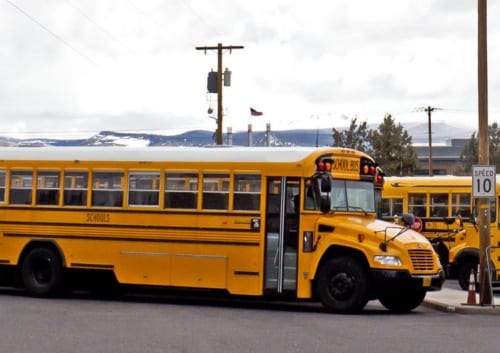Bringing the Classroom to Life
By Mac Bogert
Like most students, I found a few classes in public school challenging, most not so much. By the time I got to college, I was coasting and wound up on academic probation. Finally, a concerned teacher — one of life’s greatest gifts of Grace — took me aside and said (I’m paraphrasing), “We all know how *&^%$^ smart you are. Stop screwing around and get to work.”
He signed me up for a seminar in Jacobean drama — Shakespeare’s later contemporaries. The room had a large conference table, nine chairs, each except one (the professors’) with two books on the seat. “Mr. Bogert,” he announced, “will be leading our discussion next Tuesday on Ben Jonson’s Volpone. Have a nice weekend.” I have never been as challenged in a class. Nor have I ever learned more deeply and meaningfully.
This was my introduction to matrix learning. If you looked down from the ceiling in that room, you’d see the matrix: we were all accountable, no hiding in the back of the class.

For our schools, I suggest we introduce a matrix structure that creates a community of learning. Rather than having a structured hierarchy (administrator – teacher – student), the matrix approach creates many more connections of greater variety, generating a ‘universe’ of learning interactions.
The student is the center, connected to teachers, administrators, other students, local businesses, the community, and other schools.
None of these roles is more or less important than any other. The matrix spreads accountability and communication equitably throughout the school and its supporting population. It encourages mutual responsibility and development of relationships not available in a traditional school structure. And after all, isn’t building and maintaining relationships a critical skill we need to be successful after commencement?

Teachers
In a matrix classroom, teachers have an exciting and challenging role to play. They still provide subject-matter expertise. But in many ways, their role is like that of the conductor of an orchestra. As Ben Zander (conductor of the Boston Children’s Philharmonic) suggests, “The conductor is the only musician in the orchestra who doesn’t make a sound. He depends for his power on his ability to make other people powerful.”
Teachers in this structure provide a sounding board, help the students map benchmarks and goals for progress, coordinate connections with the other members of the matrix structure. They also help the students by coaching them as fellow teachers, since part of the student’s role in the matrix structure is to teach other students as they gain knowledge, skill, and experience.
A first step? Give students regular opportunities to design and lead lessons.

Administrators
When I was in school, I knew my principal fairly well, as we met frequently (in his office). But most students have as much of a relationship with their principal as we do with our state governors. Why not have all staff, including counselors, facilities maintenance, nurse, principal and office staff, take part in working with students to operate the school?
Why shouldn’t students help staff run the school by learning about scheduling, budgeting, understanding how counselors provide their services, finding out about the school board, politics and how policy is developed? These are terrific real-world opportunities to learn. And the staff gets help from a population with boundless energy as well as the satisfaction of helping students in their development.
A first step? Establish a shadowing program where students spend some time with administrators and staff. And vice-versa.

Other Students
“If you want to really learn a subject, teach it.” Even explaining the stars to a small child enlivens our own understanding of a miracle we might not otherwise notice.
Segregating children by grade level has never been shown to increase learning. It’s a leftover from the industrial approach to schooling that treats people like products. Learning from each other, nourishing knowledge and insight through sharing points of view and diversity of experience, is potent and lasting.
The matrix approach enables every learner to be equal and valuable to every other learner. Ask anyone who has ever been in a healthy mentoring relationship who benefitted the most. The answer is always “both of us.”
Besides paying off in terms of a wider variety of ideas, (after all, every teacher, no matter how spectacular, is bound by her/his experience and viewpoint) students working with students encourages developing social skills, emotional intelligence, listening and feedback skills as well as an appreciation for differences. And that’s for the teachers as well as for the students.
A first step? Speak with other teachers about setting up some mixed activities across grade levels. Encourage the more experienced/advanced students to lead.

Businesses
Corporations and small businesses have much to offer and much to gain from working in partnership with schools. They give students opportunities to learn “on the ground” rather than in the classroom, about entrepreneurial practices and vision, personnel and financial management, motivation and accountability. More importantly, students can gain a clear understanding of customer service, which is about building relationships rather than transactions.
Understanding the power of relationships is a core element to a matrix classroom. Businesses gain good will, a sense of community and service, and establish a connection to the employees, managers and customers of the future.
A first step? Approach local business/service organizations (like the Chamber of Commerce, Kiwanas, Rotarians, etc.) with a request that they help put together (and present) lessons on the “nuts and bolts” of developing an idea or business. They can lead an open and frank dialogue about customer service, which leads to some great stories and shared insight.

Community
The community — including, but not limited to, parents — is the supporting fabric for every school. That relationship can be enlivened and enriched by having community members brought into the classroom to share their own experiences in school, work and life. They can lead panel discussions on raising a family, balancing work and home, budgeting, even interviewing for a job (and getting the job you want). Students can become active in community projects, senior centers, workforce development projects, the myriad of activities that are nearly constant and need eager participants who are open to learning and contributing new ideas.
Students can serve as adjunct members of hearing and advisory boards to learn the ins and outs of projects, politics, and development. They can bring the perspective of the future to planning and resource allocation within the community.
A first step? Find local community organizations that need volunteer help and have them give a presentation in class about how they serve. Have the class create a promotional campaign to help the organization as well as contributing as volunteers.

Other Schools
More often than not, other schools are seen as athletic rivals and little more. Yet every school has a unique staff, resources, access to different communities and different opportunities. Why not have a city- or county- or district-wide database detailing the background of faculty, specialty classes not offered in other schools and resources (like schools with facilities such as a shop program, large auditorium, or advanced computer lab)?
A first step? Encourage teachers from different schools to build a thought leader/best practices virtual blackboard/share point.
The “Big Three”
Instituting a matrix approach provides three over-arching benefits that transform how everyone in the learning community sees learning and the school.
1. People are more likely to be invested in, and aligned with, an organization for which they are valued participants. The broader the engagement of the learning community, the greater the shared understanding of what school is about and the greater the alignment of the school with its surrounding population.
2. People (especially teenagers) already have a tendency to tribalize by group; bridging learning across age groups and spreading the source of learning more broadly helps break down this sclerosis. After commencement, having a strong ability to work with a widely diverse group of people can only benefit them and society.
3. We learn all the time (even when we sleep, the researchers tell us). The matrix classroom entrenches the idea of learning as a life-long, shared activity bounded only by imagination and opportunity.
Author
 Since 1994, Mac Bogert has been president of Aza Learning, providing innovative coaching and learning programs focused on leadership and creative thinking. He began teaching in 1971 after attending Washington and Lee University and the University of Virginia. He’s taught in a variety of schools, from elementary to college, today providing learning support for 200 clients nationwide.
Since 1994, Mac Bogert has been president of Aza Learning, providing innovative coaching and learning programs focused on leadership and creative thinking. He began teaching in 1971 after attending Washington and Lee University and the University of Virginia. He’s taught in a variety of schools, from elementary to college, today providing learning support for 200 clients nationwide.
He recently published Learning Chaos: How Disorder Can Save Education, which suggests we don’t need to make people learn but to remove the barriers that prevent learning. Mac lives in Annapolis, MD, where he works, writes, sails and plays blues guitar, though not all at the same time.
Further Reading
- Newsweek – What teachers say is critical to making an inclusive classroom
- Huffington Post – It’s Time to Stop Talking about the 21st Century
- The New York Times – Teaching Activities for: ‘A New Kind of Classroom: No Grades, No Failing, No Hurry’


